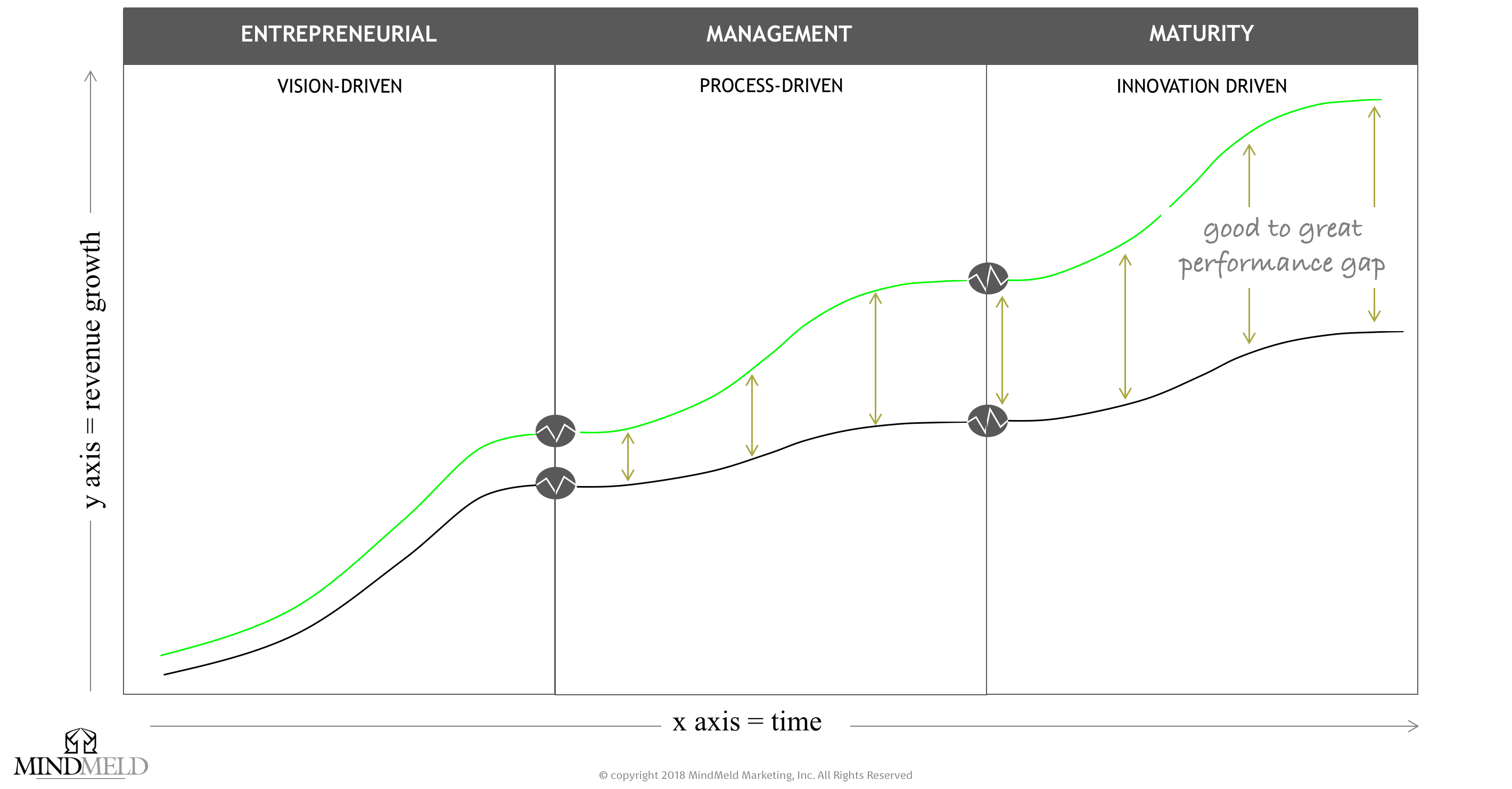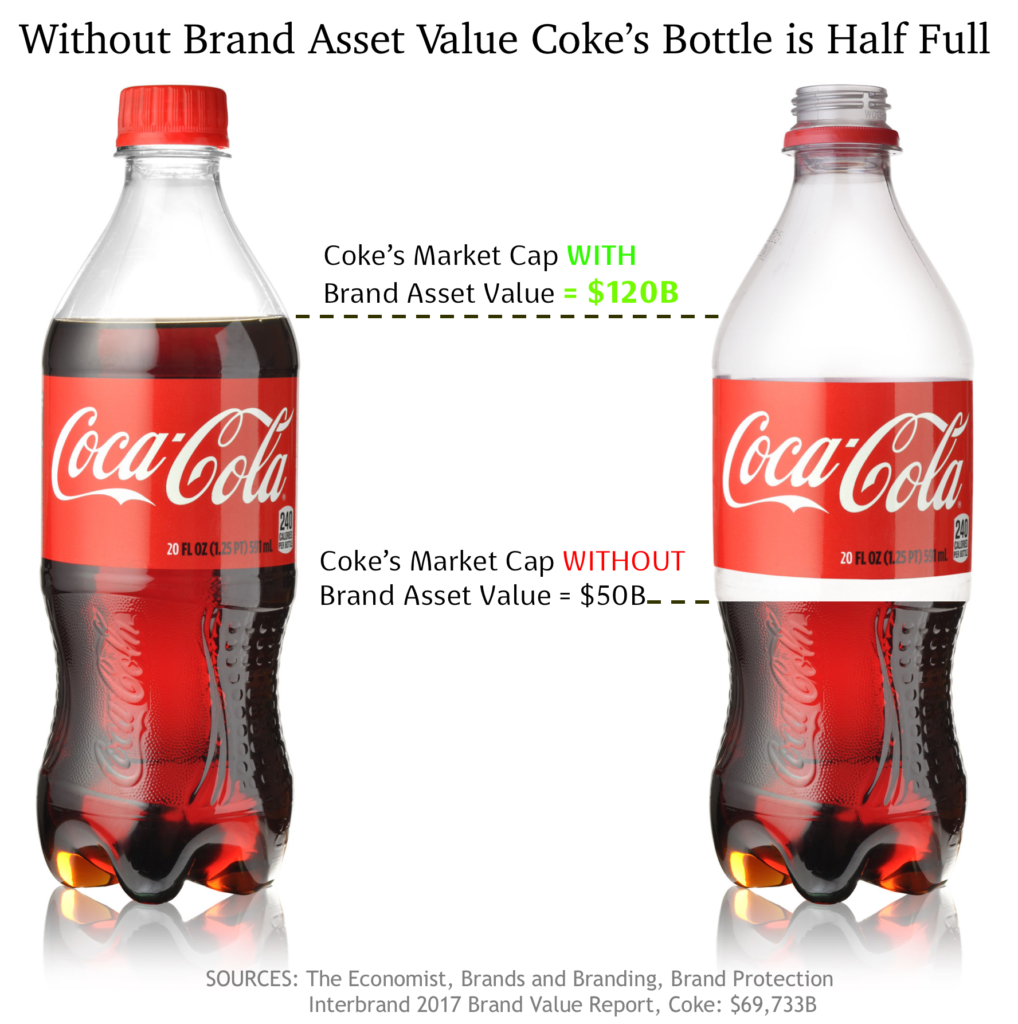Brand building is about selling your products and/or services in the best, most profitable way throughout each phase of the organization’s lifecycle.
Elevating performance from good to great is not merely dictated by the slope of your revenue curve — that goes without saying. Brand strategy actually allows you to shift the entire “S-curve” upward. This is what makes great companies not just more successful and more profitable, but exceedingly more valuable.
Think Brand Asset Value is an esoteric concept with no real impact on earnings and your organization’s overall valuation? The graphic below illustrates the difference transforming your business into a brand makes.
Here are five things you can do to put your organization on a higher plane and ensure you optimize the growth curve:
- Define your vision/mission from the outset using simple, uncomplicated terms. Try to summarize your Vision using only a noun and a verb. For example, MindMeld is committed to the mission of helping you discover, define, communicate, and capitalize on value. (We cheated by using four verbs, but you get the picture. By value we mean the inherent value of your products and/or services.)
- Establish your core beliefs (worldview). Try to limit your beliefs to two or three at most. One is best. For example, Nolan Bushnell, the founder of Atari, built its brand around the belief that “science fiction is the reality of the future.” Express your core belief(s) as a statement: We believe…
- Outline and define your organizational values. Be specific and honest. For example, we worked with a client that greatly valued and rewarded “greed” and aggressive behavior. Its leadership balked at including these in its value statement. Yet to a large extent those two attributes factored heavily into everything the organization did and how team members were evaluated. It experienced high turnover as a result. Objectivity and honesty are essential in defining organizational values, otherwise they become “words on paper.”
- Develop an end-to-end value chain model. Create processes and procedures (how you do things) that enhance value every step of the way. Harvard Business School’s Michael Porter writes and makes a strong argument that how you do things — what he calls “sets of activities” — are the most important factor in strategic positioning. And positioning is what Brand is all about. Important note: Develop process first, then integrate technologies that fit your operating methodologies. Refrain from trying to build your processes around technology. Doing so introduces complications and complexity, increases time to market, and in most cases, poor performance due to lack of competency and expertise within the existing workforce.
- Implement a go-to-market strategy FOCUSED entirely on the inherent value your organization offers — which is the sum total of your Vision, Worldview, Values, and Methodologies.
By following these five simple steps you create a brand position that transcends market dynamics, disruptive innovations, price fluctuations, and the potentially fatal wave of change encountered at each life-stage inflection point. Of course, monitoring performance and making adjustments along the way is imperative. That aspect should be baked into your methodologies.
Hopefully this removes the “mystery” associated with brand building and Brand Asset Maximization. Clearly you already have what it takes. Go and make it so.
MindMeld provides business leaders with logical, proven, and exceedingly effective tools for developing, defining, communicating, and capitalizing on Value — equal parts Art and Science and 100% effective. To learn more contact Doug Knuth at doug.knuth@mindmeldmarketing.com.


